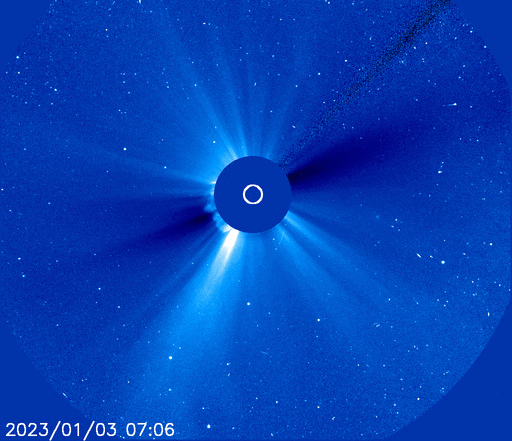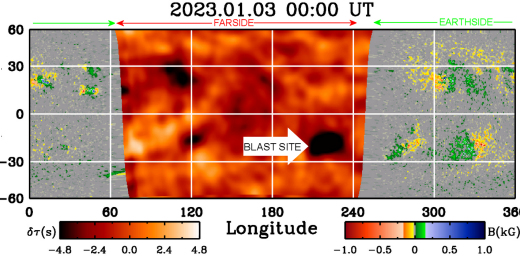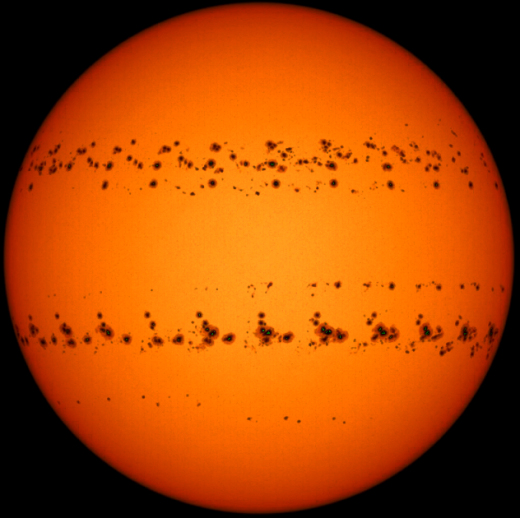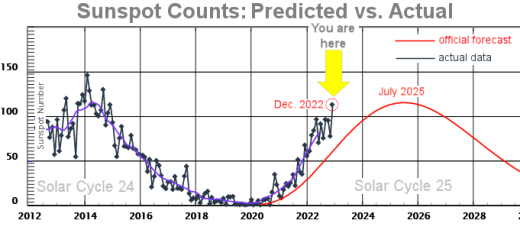Jan. 4, 2023: Something just exploded on the farside of the sun. SOHO watched the debris–a very bright and fast CME–billow away from the sun’s southeastern limb on Jan. 3rd:

It won’t hit Earth. NOAA analysts have modeled the CME and determined that the edge of the storm cloud will narrowly miss our planet a few days from now.
NASA’s Solar Dynamics Observatory detected shock waves from the blast wrapping around both of the sun’s poles. This suggests a very powerful explosion–possibly an X-flare. Radiation from the flare was eclipsed by the edge of the sun, reducing its intensity by one to two orders of magnitude, so that Earth-orbiting satellites detected only a C4-class event.
Whatever exploded will soon turn to face Earth. Helioseismic echoes pinpoint its location no more than 2 days behind the sun’s eastern limb:

This might be old sunspot AR3163, which spent the last two weeks transiting the farside of the sun. It was big the last time we saw it in December and may have grown even bigger since. Stay tuned! Solar flare alerts: SMS Text.
This story was brought to you by Spaceweather.com

